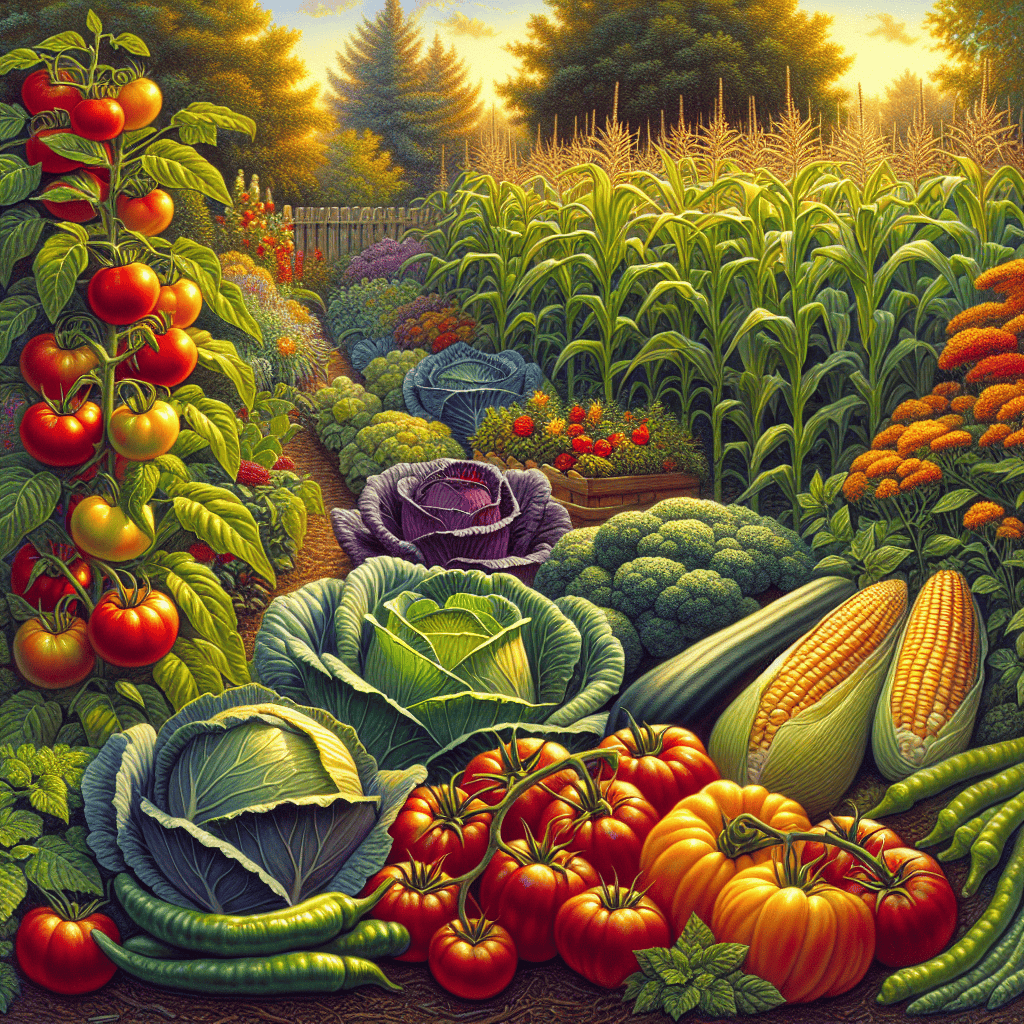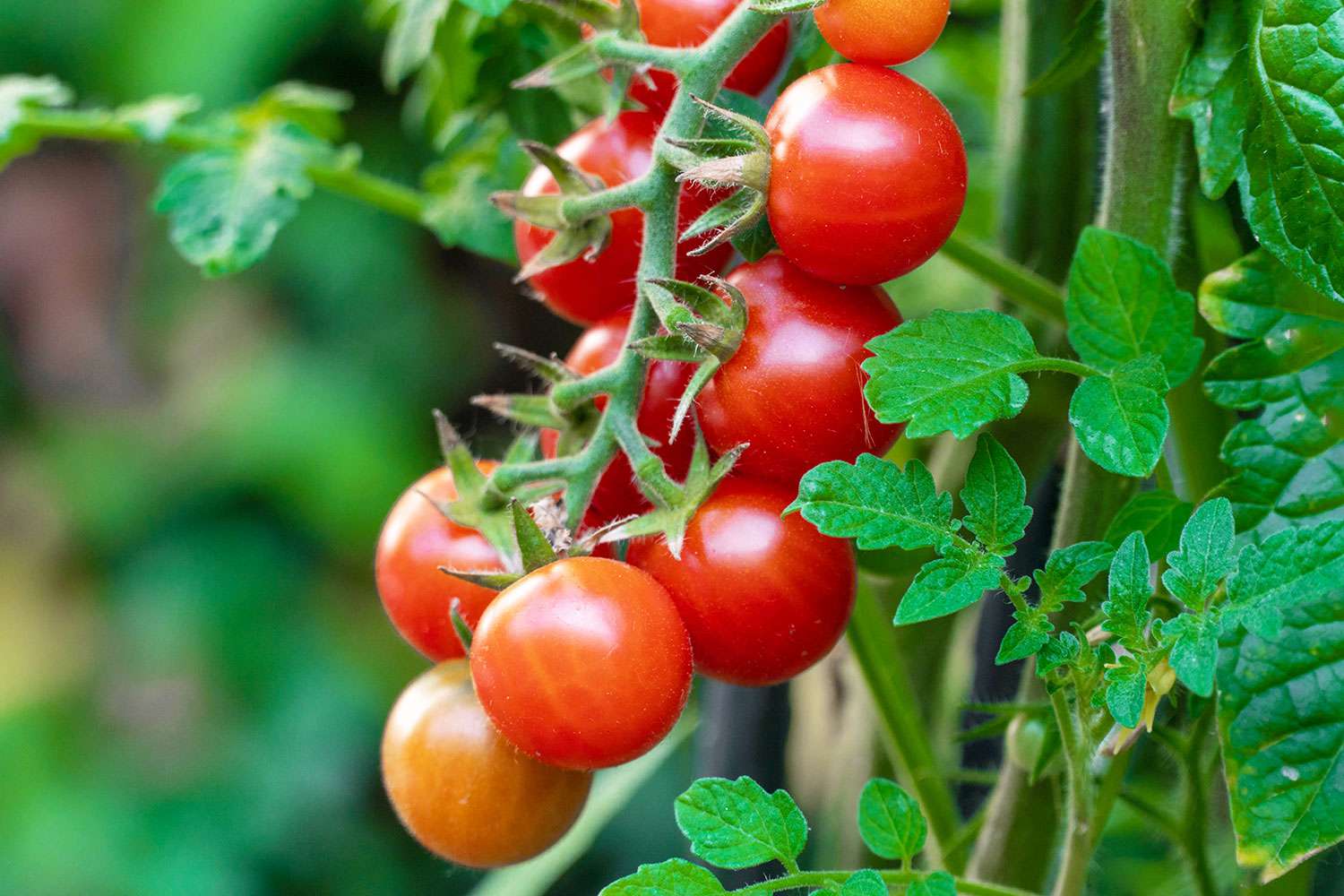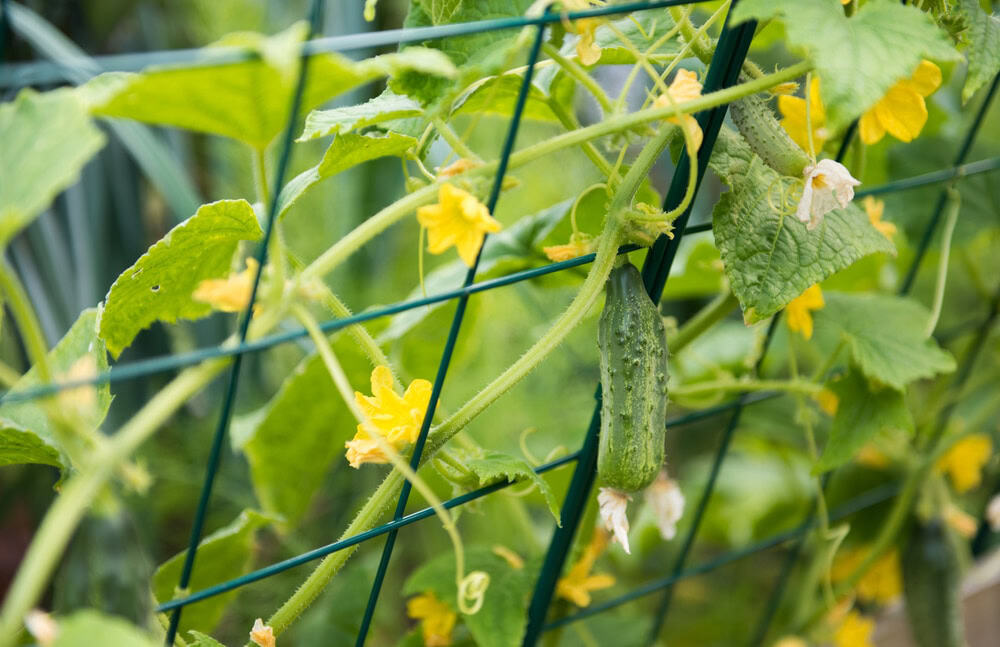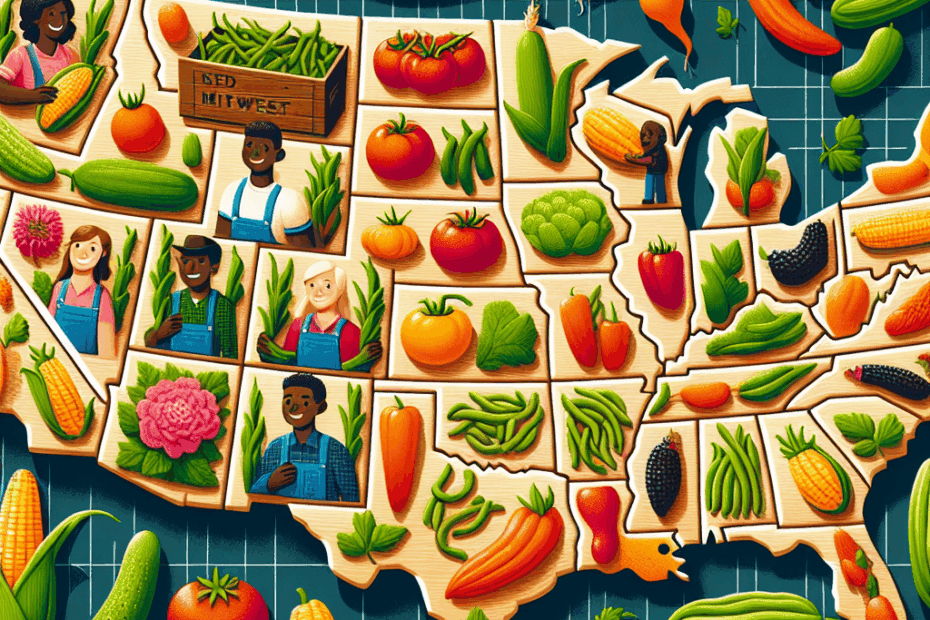10 Best Vegetables to Grow in the Midwest – Intro
The Midwest, with its rich soil and diverse climate, offers an ideal environment for cultivating a variety of vegetables. Gardeners in this region can take advantage of the warm summers and ample rainfall to grow a bountiful harvest. Some of the best vegetables to grow in the Midwest include tomatoes, known for their versatility and flavor; sweet corn, a staple of summer barbecues; and peppers, which thrive in the warm temperatures. Cool-season crops like lettuce, spinach, and radishes can be planted in early spring or fall, providing fresh produce throughout much of the year. Additionally, root vegetables such as carrots and beets are well-suited to the Midwest’s soil conditions. By selecting the right varieties and planting at the appropriate times, gardeners can enjoy a productive and rewarding growing season.
Top 10 Vegetables for a Thriving Midwest Garden
Growing a successful garden in the Midwest requires an understanding of the region’s unique climate and soil conditions. The Midwest, characterized by its hot summers, cold winters, and fertile soil, offers an ideal environment for a variety of vegetables. Selecting the right crops can lead to a bountiful harvest, and certain vegetables are particularly well-suited to thrive in this region. Among the top choices for Midwest gardens, tomatoes stand out as a favorite. Known for their versatility and flavor, tomatoes flourish in the warm summer months. Varieties such as ‘Beefsteak’ and ‘Roma’ are particularly popular, offering robust yields and rich taste. Transitioning from tomatoes, peppers also make an excellent addition to the Midwest garden. Both sweet and hot peppers benefit from the long growing season, with bell peppers and jalapeños being among the most commonly cultivated.
Moving on to root vegetables, carrots are another excellent choice. They thrive in the cooler temperatures of early spring and late fall, making them a versatile crop for the Midwest’s variable climate. Similarly, beets are well-suited to the region, offering both edible roots and greens. Their ability to withstand cooler temperatures makes them a reliable option for gardeners looking to extend their growing season. In addition to root vegetables, leafy greens such as spinach and lettuce are ideal for Midwest gardens. These crops prefer the cooler temperatures of spring and fall, and they can be harvested multiple times throughout the season. Spinach, in particular, is known for its cold tolerance, allowing it to be one of the first crops planted in the spring.
As we consider legumes, green beans are a staple in many Midwest gardens. They are easy to grow and produce abundant yields throughout the summer. Both bush and pole varieties are popular, with the latter offering the advantage of vertical growth, saving valuable garden space. Transitioning to another summer favorite, cucumbers thrive in the Midwest’s warm climate. They require ample sunlight and water, but with proper care, they can produce a prolific harvest. Varieties such as ‘Marketmore’ and ‘Straight Eight’ are well-regarded for their disease resistance and productivity.
Furthermore, squash, both summer and winter varieties, are well-suited to the Midwest. Zucchini, a type of summer squash, is particularly popular due to its rapid growth and versatility in the kitchen. Winter squash, such as butternut and acorn, require a longer growing season but reward gardeners with their rich flavors and long storage life. Finally, onions are a reliable crop for Midwest gardens. They can be planted early in the season and are relatively low-maintenance. With a variety of types available, including yellow, red, and white onions, they offer versatility in culinary uses.
In conclusion, the Midwest’s climate and soil conditions provide an excellent environment for a diverse range of vegetables. By selecting crops that are well-suited to the region, gardeners can enjoy a thriving and productive garden. From tomatoes and peppers to carrots and onions, these vegetables not only offer nutritional benefits but also enhance the culinary possibilities for any home cook. With careful planning and attention to the specific needs of each crop, Midwest gardeners can look forward to a successful growing season.
Seasonal Planting Guide: Best Vegetables for Midwest Climates

The Midwest, known for its rich soil and diverse climate, offers a unique opportunity for gardeners to cultivate a variety of vegetables. Understanding the regional climate and soil conditions is crucial for successful gardening. The Midwest experiences a range of weather patterns, from hot summers to cold winters, which can influence the types of vegetables that thrive. Therefore, selecting the right vegetables for each season is essential for maximizing yield and ensuring a bountiful harvest.
One of the most popular vegetables to grow in the Midwest is the tomato. Tomatoes thrive in the warm summer months, benefiting from the long days and ample sunlight. They require well-drained soil and consistent watering to produce juicy, flavorful fruits. Varieties such as ‘Beefsteak’ and ‘Roma’ are particularly well-suited to the Midwest climate, offering both size and taste. Transitioning from summer to fall, gardeners can consider planting cool-season crops like broccoli and cabbage. These vegetables are hardy and can withstand the cooler temperatures that characterize the Midwest autumn. Broccoli, in particular, benefits from the cooler weather, which enhances its flavor and texture.
As the season progresses into fall, root vegetables such as carrots and beets become excellent choices. These vegetables are not only easy to grow but also store well, making them ideal for the colder months. Carrots require loose, sandy soil to develop properly, while beets thrive in slightly acidic conditions. Both vegetables can be planted in late summer for a fall harvest, providing a nutritious addition to any meal. Furthermore, leafy greens like spinach and kale are perfect for the Midwest’s fall climate. These greens are frost-tolerant and can continue to grow even as temperatures drop, offering a fresh source of vitamins and minerals well into the late fall.
Winter in the Midwest can be harsh, but with the right planning, gardeners can still enjoy fresh produce. Cold frames and hoop houses can extend the growing season for hardy greens and root vegetables. Spinach, for instance, can survive under a light cover of snow, making it an excellent choice for winter gardening. Additionally, garlic is a popular crop to plant in the fall for a summer harvest. It requires a period of cold dormancy to develop properly, making the Midwest winter an ideal environment for its growth.
As spring approaches, the focus shifts to early-season crops such as peas and radishes. These vegetables can be planted as soon as the soil can be worked, often as early as March or April. Peas thrive in the cool, moist conditions of spring and can be harvested before the summer heat sets in. Radishes, with their quick growth cycle, provide a fast and rewarding harvest, making them a favorite among Midwest gardeners.
Maximize Your Harvest: Ideal Vegetables for Midwest Growers
Growing vegetables in the Midwest can be a rewarding endeavor, given the region’s diverse climate and soil conditions. To maximize your harvest, it is essential to select vegetables that thrive in the Midwest’s unique environment. The region experiences a range of weather patterns, from hot summers to cold winters, which can influence the types of vegetables that grow best. Understanding these conditions and choosing the right crops can lead to a bountiful harvest.
One of the most popular vegetables to grow in the Midwest is the tomato. Tomatoes are well-suited to the region’s warm summers, and with a variety of types available, from cherry to beefsteak, they offer versatility in the kitchen. To ensure a successful tomato crop, it is crucial to plant them after the last frost and provide support as they grow. Additionally, regular watering and full sun exposure will help produce juicy, flavorful tomatoes.

Another excellent choice for Midwest gardens is sweet corn. This staple of summer barbecues thrives in the region’s fertile soil and warm temperatures. Planting corn in blocks rather than rows can improve pollination, leading to fuller ears. It is important to note that corn requires ample space and consistent watering to reach its full potential. By staggering planting times, gardeners can enjoy a continuous harvest throughout the summer months.
Cucumbers are also a favorable option for Midwest growers. These fast-growing vines flourish in the heat and can be trained to climb trellises, saving valuable garden space. Cucumbers require regular watering to prevent bitterness and should be harvested frequently to encourage continued production. With varieties ranging from slicing to pickling, cucumbers offer a refreshing addition to any summer meal.

In addition to these warm-weather crops, cool-season vegetables such as lettuce and spinach are ideal for early spring and fall planting. These leafy greens prefer cooler temperatures and can be sown directly into the soil as soon as it is workable. Lettuce and spinach are quick to mature, allowing for multiple harvests throughout the growing season. By planting successively, gardeners can enjoy fresh greens well into the cooler months.
Root vegetables like carrots and beets are also well-suited to the Midwest climate. These crops can be planted in early spring or late summer for a fall harvest. Carrots require loose, well-drained soil to develop properly, while beets are more forgiving of soil conditions. Both vegetables benefit from consistent moisture and thinning to ensure adequate space for growth. Their ability to store well makes them a practical choice for extending the harvest into winter.
Finally, consider growing beans, which are both productive and easy to cultivate. Whether choosing bush or pole varieties, beans thrive in the Midwest’s warm weather and can be planted after the danger of frost has passed. Regular harvesting encourages continued production, and their nitrogen-fixing properties can improve soil health for future crops.
By understanding the growing conditions and needs of each crop, gardeners can enjoy a diverse array of fresh produce throughout the growing season. From tomatoes and sweet corn to lettuce and carrots, the Midwest offers a fertile ground for a variety of vegetables, making it an ideal region for both novice and experienced gardeners alike.

10 Best Vegetables to Grow in the Midwest – Conclusion
The Midwest, with its diverse climate and fertile soil, offers an excellent environment for growing a variety of vegetables. Some of the best vegetables to cultivate in this region include tomatoes, peppers, cucumbers, and zucchini, which thrive in the warm summer months.
Cool-season crops like lettuce, spinach, and kale are also well-suited for the Midwest, as they can be planted in early spring or fall. Root vegetables such as carrots, beets, and radishes are ideal for the Midwest’s soil conditions and can be grown throughout the growing season. Additionally, beans and peas are excellent choices due to their adaptability and ability to enrich the soil with nitrogen. By selecting these vegetables, gardeners in the Midwest can enjoy a bountiful and diverse harvest throughout the growing season.
The Midwest offers a diverse range of opportunities for vegetable gardening throughout the year. By understanding the regional climate and selecting appropriate crops for each season, gardeners can enjoy a continuous supply of fresh produce. From the heat-loving tomatoes of summer to the frost-tolerant greens of winter, the Midwest climate supports a wide variety of vegetables, ensuring that every season brings its own unique bounty.
